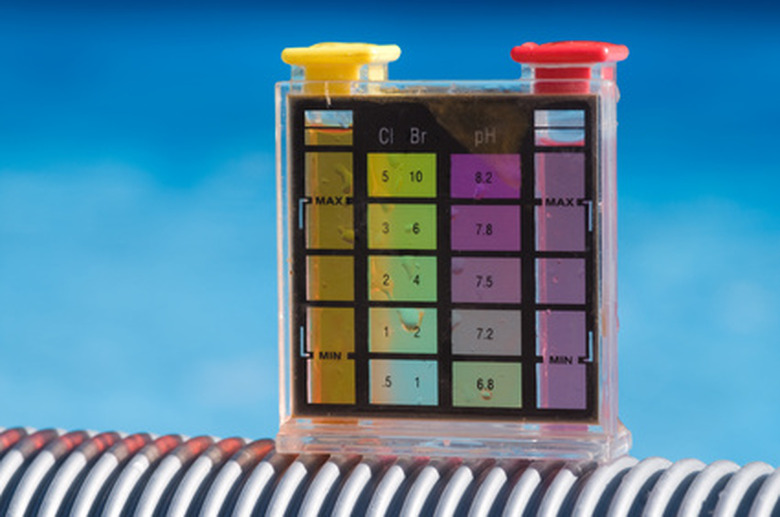The Effects Of NaOH Concentration With H2O
Sodium hydroxide or NaOH is an ionic compound that belongs to a class of compounds called bases. Also known as lye, it finds a wide variety of uses in chemistry labs, the chemical industry, and construction, among other applications. The following four effects can occur as the concentration of sodium hydroxide in water increases.
Hydroxide Ions
Hydroxide Ions
When NaOH dissolves into water, it dissociates into two ions: a positively charged sodium ion and a negatively charged hydroxide ion (OH-). The increased number of hydroxide ions in the solution increases the concentration of hydroxide ions in the water.
pH
pH
Water can undergo a reaction called autoprotolysis, whereby one water molecule donates a proton (a hydrogen ion) to another, resulting in the formation of a hydroxide ion (OH-) and a hydronium ion (H3O+). This reaction can also be reversed, since hydroxide ions accept a hydrogen atom from hydronium ions to form a molecule of water. In pure water this two-way reaction is in equilibrium so that the concentration of hydroxide and hydronium ions in the water is equal. The negative log of the hydrogen ion concentration is called the pH; pure water has a pH of 7. The hydroxide ions from dissolved sodium hydroxide perturb this balance; as the additional hydroxides accept protons from hydronium ions, they decrease the hydrogen ion concentration, thereby increasing the pH. Adding more sodium hydroxide will increase the pH of the water or make it more basic.
Neutralization
Neutralization
A base like sodium hydroxide can react with an acid to neutralize it. In this type of reaction, the hydroxide ion will accept a proton from the acid to form a molecule of water (H2O). Adding sodium hydroxide to a solution of an acid can neutralize some of the acid in the water.
Buffering
Buffering
A buffer is a solution that exhibits little change in pH when an acid or base is added. A concentrated solution of sodium hydroxide acts as a buffer (albeit a very alkaline one) since adding small quantities will not change the pH significantly–the acid will only react with the sodium hydroxide that was already present in the water, and the pH will not change significantly since pH is a logarithmic scale.
References
- "Chemical Principles, the Quest for Insight, 4th Edition"; Peter Atkins and Loretta Jones; 2008.
- Chemical Scorecard: Sodium Hydroxide
Cite This Article
MLA
Brennan, John. "The Effects Of NaOH Concentration With H2O" sciencing.com, https://www.sciencing.com/effects-naoh-concentration-h2o-7468786/. 24 April 2017.
APA
Brennan, John. (2017, April 24). The Effects Of NaOH Concentration With H2O. sciencing.com. Retrieved from https://www.sciencing.com/effects-naoh-concentration-h2o-7468786/
Chicago
Brennan, John. The Effects Of NaOH Concentration With H2O last modified March 24, 2022. https://www.sciencing.com/effects-naoh-concentration-h2o-7468786/
